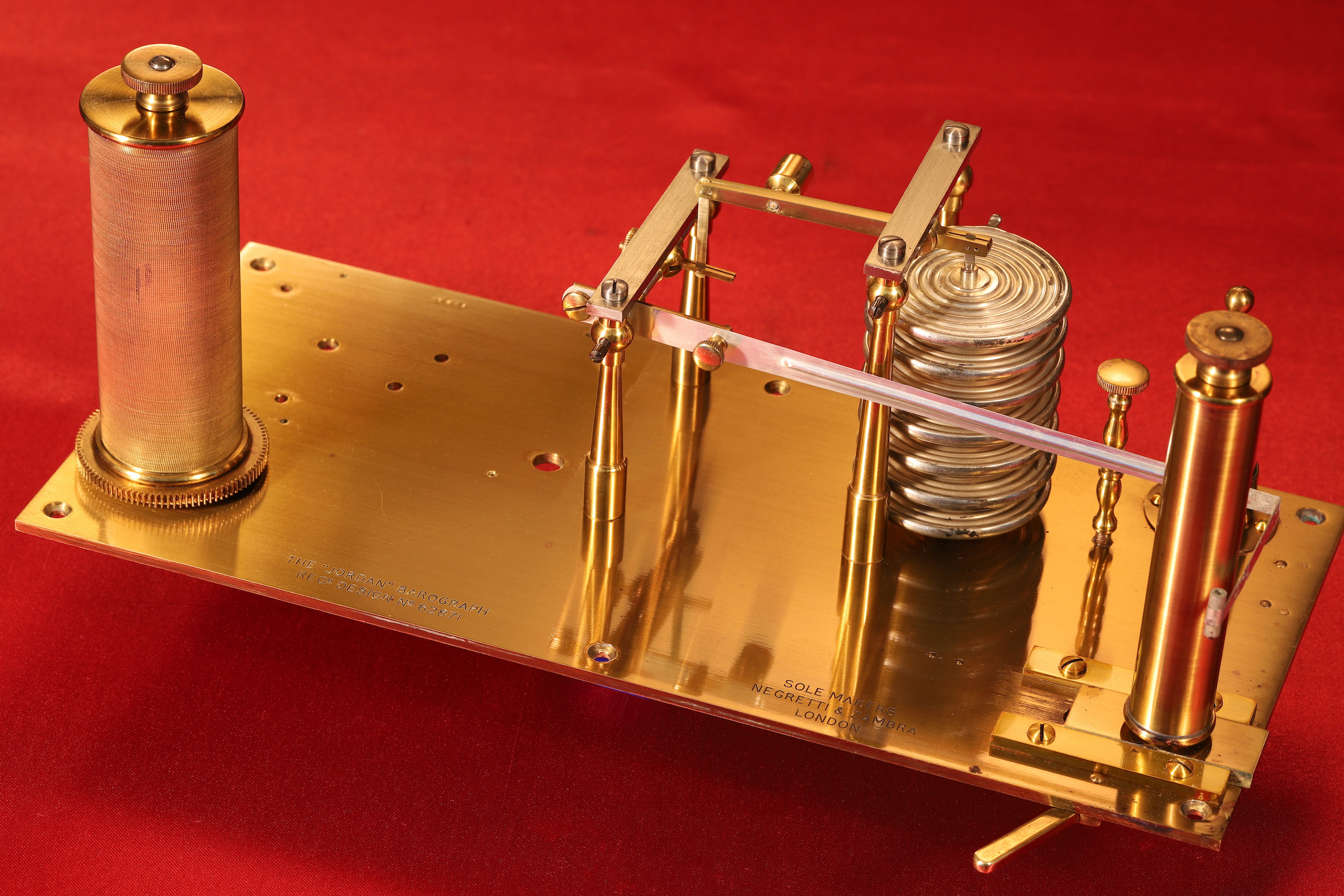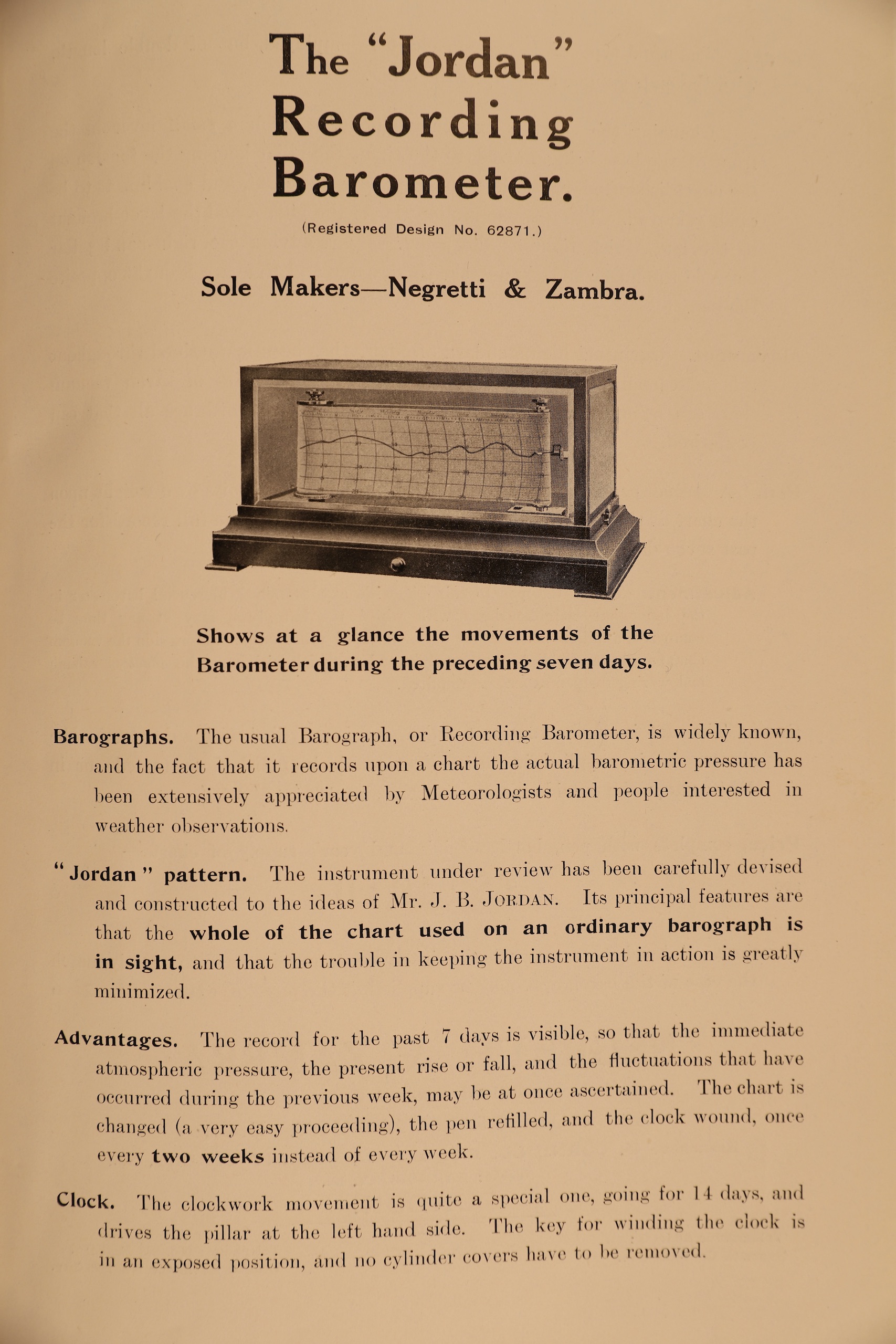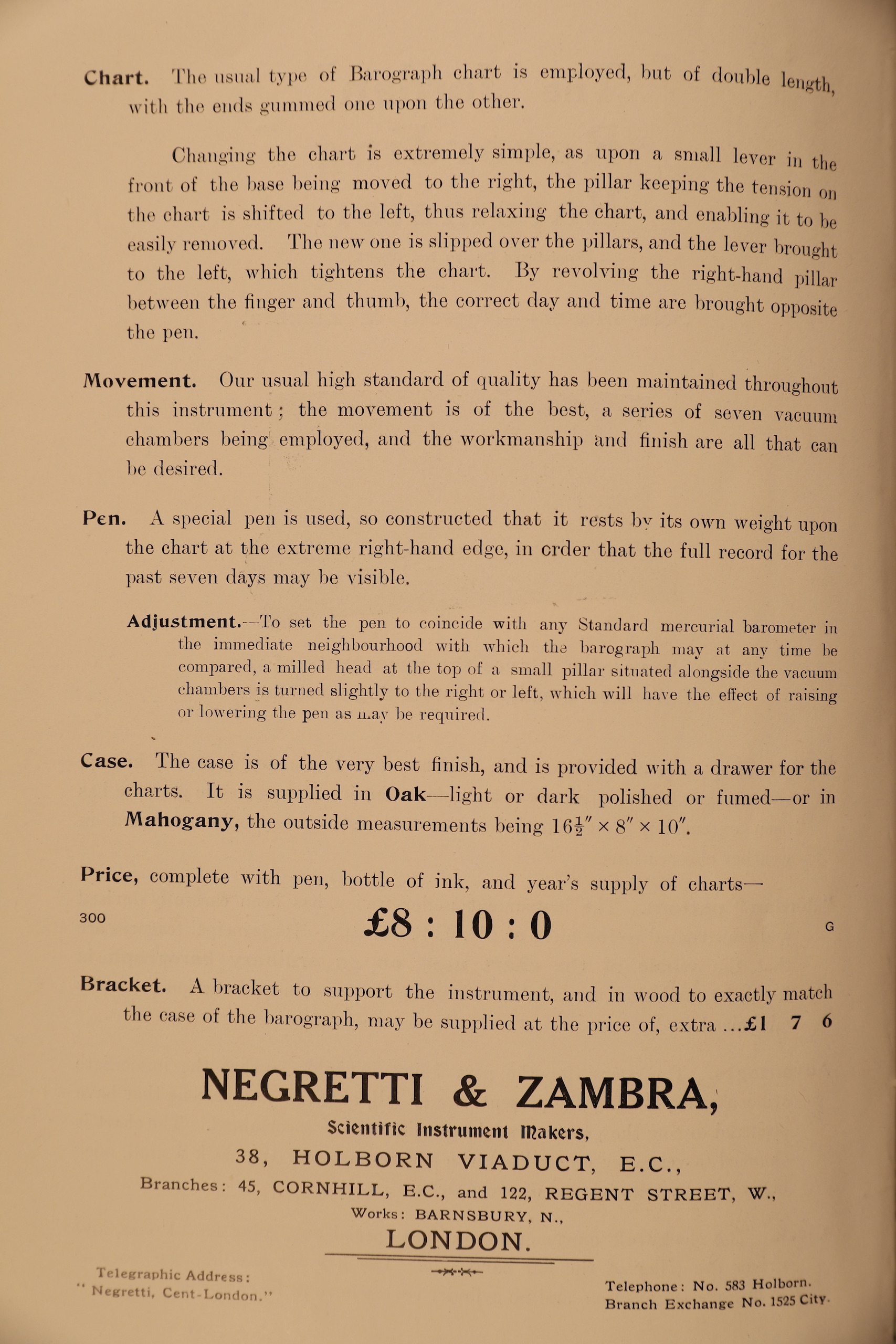Many might wonder what might be next on Vavasseur Antiques. “Work in progress” is a constant state, since almost all the items we offer are comprehensively re-built, serviced, and/or benefit from conservation. Consequently through-put is sometimes slow.
This does mean though that the things we offer are ‘proper,’ as described, and as original as possible, not the product of the buffing wheel and a squirt of WD40.
So today I thought you might like a glimpse of one of the most interesting and certainly extremely rare antique barographs – I bring you the Negretti & Zambra “Jordan,” chassis no. “1643” and “Regd Design No 62871.”
This instrument has been in our inventory for some time, and is in the process of a complete re-build and other attendant operations that will produce an instrument that is in almost all respects original, working well, and lets us see a great deal of its former glory in finish, aesthetics, and vibrancy.
Amongst the world of those that study these instruments, we can find just five that are known: serial nos. 178, 501, 1643, and two others with unrecorded numbers. Indeed, Phillip Collins in his book on barographs is quoted as having only ever seen one. It might be that this is a dedicated serial range to this instrument, but I am pretty sure these were made to special order – they don’t feature as standard production in the N&Z “M” catalogues, and many more than five would be known if say around 2,000 were produced. They do appear as a single entry in the first ‘M’ catalogue, where Negretti & Zambra state that the instrument is “under review” at that time, circa 1912. That said there is no hard evidence to suggest that the entire serial range was taken up by this instrument. It is known that Jordan co-operated with N&Z on other instruments and it is likely that this was an NZ serial range for “all things Jordan.”
A good comparison here for production and known numbers is the very collected Bourdon Clock Barometer (the Pendule) – we know that just 500 of these were built, and of those known and those estimated to be in existence, probably at least 50 out of 500 remain. With reference to the Jordan, this points very strongly to an extremely small production, certainly not 1,500 or so, and more likely 100 or 200, and most possibly less.
A note here: to be collectable the item must be known, attractive, rare, and functional – one offs, though interesting, are intensely hard to value and very often ignored by collectors because they don’t really fit in with a pattern that we like!
This instrument, as you will immediately understand, carries a chart paper resembling a continuous belt, the obvious advantage here is that the entire preceding seven days of barometric values may be seen at a glance, making the art of forecasting immeasurably easier. The instrument is driven from a clockwork motor mounted within a lacquered brass case having a 14-day duration (not pictured fitted).
The arm-mounted nib is a novel design. The very first ones referred to as a capillary, this design was certainly flawed by blockage and coagulation, and was later replaced by a more conventional barograph nib but swinging about an off vertical axis, relying on the weight of the nib unit to keep it contact with the paper.
Fitting the paper is easily done, the smaller right hand roller sliding in dovetails and enabled to move toward the drive roller for chart changing, or away from it for tensioning.
The instrument will be presented in its original, very good quality five glass oak case with hinged end.
James B. Jordan worked at the British Home Office, and was the inventor of the Jordan Sunshine Recorder, presented to the Royal Meteorological Society in 1885. He was the grandson of Thomas Brown Jordan, who pioneered the use of photography in meteorology in the 1830s.


